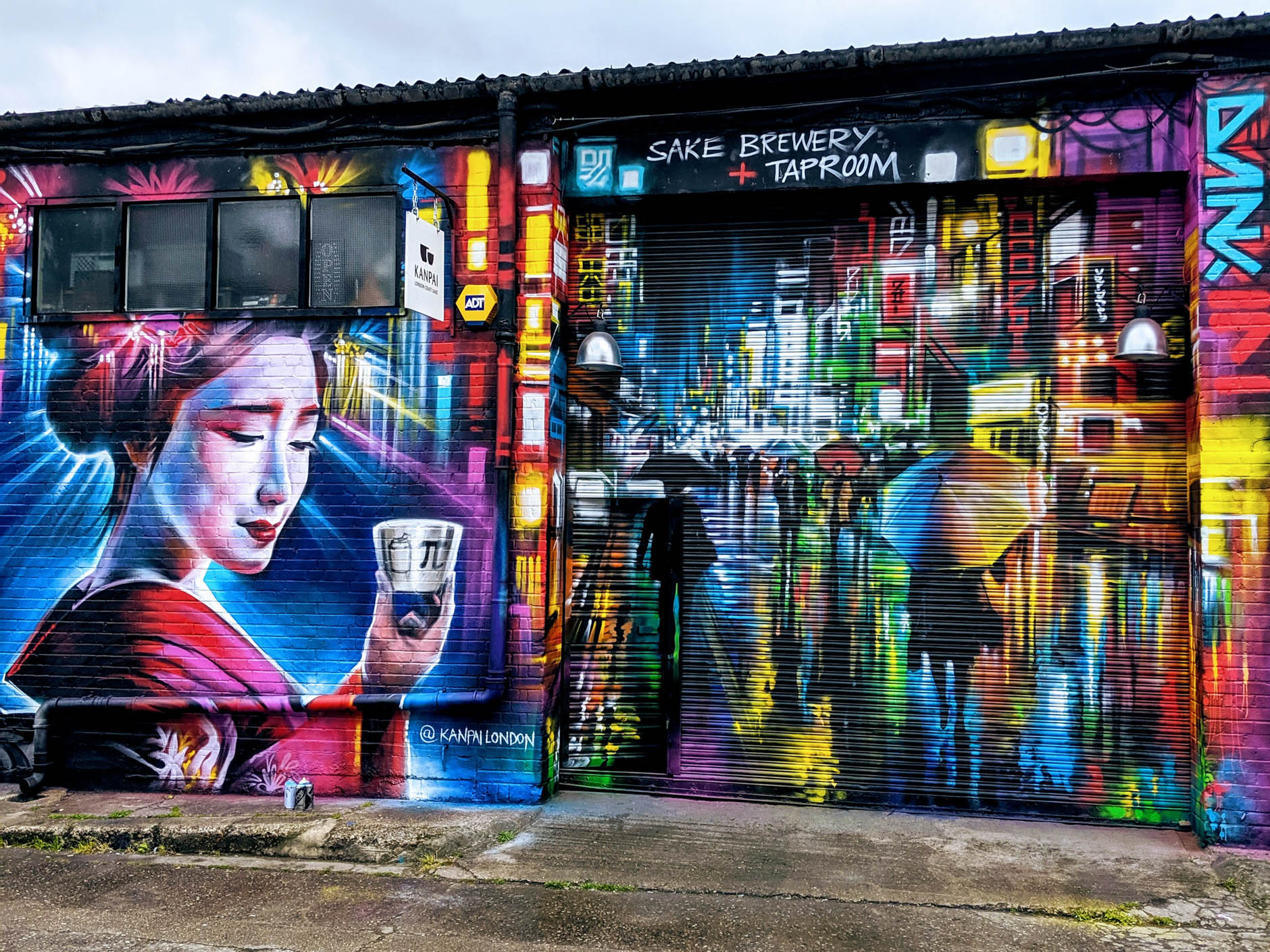Sake is gaining popularity and is served in many restaurants across the country. It is made with four ingredients – rice, water, yeast and koji. Palate contributing writer Rashmi Narayan (RN) meets Tom Wilson (TW) who founded Kanpai Sake Brewery in Peckham, a first of its kind in the UK, with his wife Lucy Wilson. There is sake on tap (namazake), by the glass and by the bottle, as well as a rotating list of guest sakes from their brewers – both Japanese and international.
RN: What drew you to sake?
TW: I fell in love with sake years ago, when I was in university. My parents migrated to the US and I was holidaying with them there. I originally got the taste for sake first in New York in my early 20’s. I was on the hunt for sake in London and realised that it was quite a passive thing here. That ultimately drove me to take a trip with my wife to Japan. It was just a food and drink focused trip where we explored a handful of sake breweries. It was eye-opening to see how sake is brewed like a beer. Up until then, I’d enjoyed sake but had never really explored the chemistry into how it was made.
RN: When and how did the idea of starting a sake brewery come about?
TW: It was never on the cards; I had no vision of ever opening a sake brewery. The idea came about in 2016. After our holiday in Japan, for about four years, there was a lot of home brewing as a hobby and soon, several bottles and batches took over our flat. We then spread the word on Instagram and we had people getting touch saying they were keen to buy it. We then worked with HMRC on getting a categorisation for sake and looked into other legal formalities. We received our first licence in 2017. We started our first commercial brews that were 500 litre bottles. Our sake was available in Selfridges and a few other stores in the summer of 2017.
RN: Does your work now involve being in Japan a lot?
TW: Lucy and I both travelled extensively to Japan after we started our business – about twice a year to speak to suppliers and build relationships. We also visit many sake breweries. The rice is polished and imported from Japan. What initially started in a lock-up in Peckham became a larger business and the current site in Copeland Park is where all the magic happens. We have seating both indoors and outdoors and there’s great food in our kitchen opposite the brewery that can be enjoyed with our sake.
RN: Beer vs sake, what are the fundamental differences?
TW: With sake it’s a multi-parallel process where all ingredients work in harmony with each other. If you look at any sake, the fermentation processes are similar to beer. We are fermenting rice instead of barley or wheat. The way that we access those sugars is the same enzymatic process, but the way we create those enzymes is different. We ferment our mash in sake – so we are extracting our sugars and creating our alcohol simultaneously, whereas in beer, you mash in and create your wort [sugar water] before your yeast goes in. Our extraction or first press in sake to collect the clear liquid is done after fermentation; in beer, it is done before.
RN: To those completely new to sake, how can they go about knowing or deciding the right sake for them?
TW: It really depends on a person’s palate and what their preferred choice of drink is. When someone walks into our bar, having never tried sake, we first ask them what they’d normally drink and from that we recommend options. I’d say start with small bottles of sake and try them. If you’re still not sure where to begin, come over to Kanpai and try a flight. There is a sake out there for everyone. For craft beer lovers, a drier, punchy, sparkling style of sake is great. There are subtle, aromatic, sweeter sakes for complete beginners to ease into sake drinking and more savoury styles for those with a mature palate.
RN: Sake has a lot of umami and is becoming popular amongst mixologists. Are there any new trends in sake at the moment?
TW: Typically, traditional sakes are low on acidity. There is a new style in Japan that we have also had a go at trying where these are lighter, more acidic sakes with natural bubbles, using white koji and they have between 12% to 13% alcohol. Sake generally sits between 5% to 22% abv. Classic average sakes found on shelves are 15% abv. These new sakes pair well with seafood or summer dishes.
RN: How sustainable is sake?
TW: Very. The main by-products from sake are resourceful. Mirin is a by-product from kasu and is often used in cooking. Koji spores can be used for fermentation or flavouring. Sake kasu are used in marinades and as it has a lot of amino acids, in Japan, it is also used in making cosmetics. Barrel aged sake vinegar (aged in burgundy oak) is subtle in flavour and can be used for dressing or seasoning. We also compile a chef’s pack where all four of these by-products are sold to restaurants in London.
This interview took place in July 2022 and was published in August 2022.
Photo provided by Kanpai London Sake Brewery & Taproom.
Kanpai London Sake Brewery & Taproom is located behind the Bussey Building at Unit 2A-2, 133 Copeland Road, London SE15 3SN. Nearest station: Peckham Rye.
For opening hours and brewery tours visit: https://kanpai.london/visit






